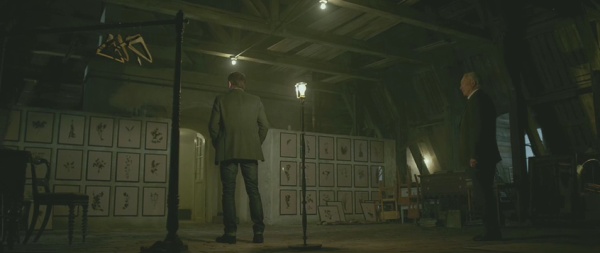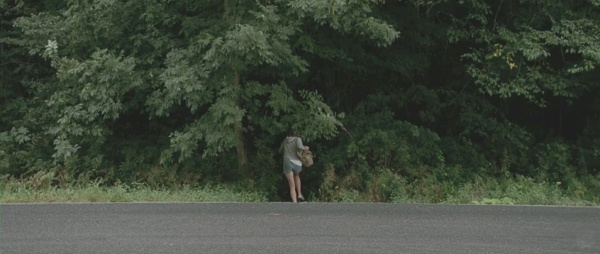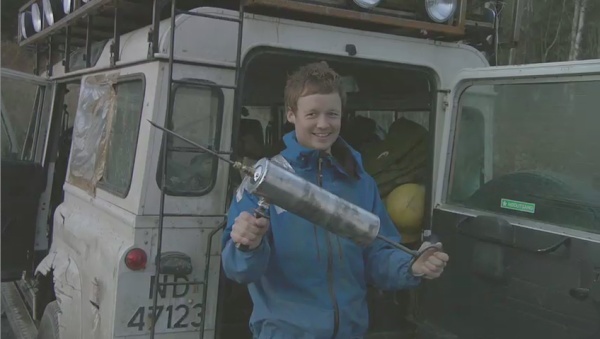2011 // USA - New Zealand // Steven Spielberg // December 17, 2011 // 3D Digital Theatrical Projection (Wehrenberg Des Peres 14)
Adapting the beloved Tintin stories to film has been a passion project for Steven Spielberg for nearly three decades. The director first sought to option the work of Belgian comic artist Hergé in 1983, after the runaway success of Raiders of the Lost Ark and E.T.: The Extra-Terrestrial had solidified Spielberg’s reputation as a Hollywood powerhouse. Twenty-eight years is a staggeringly long time for a film to languish in Development Hell, but the feature that has finally emerged, The Adventures of Tintin, is no worse the wear for its long gestation. In fact, Tintin is that rarest of things in this era when aggressive, directionless ugliness dominates the cinema of big-budget spectacle: a work in which cutting-edge technology allows a genuine film artist to express themselves without the usual analog limitations. It’s telling that the seeds of Tintin were planted by the Steven Spielberg of 1983, a man who had so recently given the world Raiders, one of the most perfect action-adventure films of all time. The Adventures of Tintin—which is, astonishingly, the first animated feature of the director’s career—gives splendid, ebullient expression to the same rousing spirit of derring-do that suffused the first chapter of the Indiana Jones saga. Moreover, Tintin finds the veteran director newly empowered by the potential of the digital film-making space, where his camera can be anywhere and move in any way he might imagine.
Adored in his native Belgium and among comics aficionados the world over, the eponymous Tintin is a young reporter of uncertain age and boundless pluck, who has an affinity for stumbling into globe-trotting adventures with his loyal wire fox terrier, Snowy. Adapted by a trio of British screenwriters—Steven Moffat, Joe Cornish, and Scott Pilgrim vs. the World director Edgar Wright—The Adventures of Tintin incorporates three of Hergé's Tintin stories: The Crab with the Golden Claws, The Secret of the Unicorn, and Red Rackham’s Treasure. Apart from amalgamating the various plot elements from these books, the only significant change that the script makes to the source material is to switch Tintin's nationality from Belgian to British, an alteration that is no doubt heretical among more impassioned devotees of the ginger-haired journalist. However, this change allows the characters to speak in English without the need for distracting logical leaps, while also preserving the decaying colonial tone of Tintin's mid-twentieth-century escapades.
The film's events begin with Tintin's purchase of an antique model ship, and from there proceed to all manner of chases, escapes, fisticuffs, and shoot-outs, at locales ranging from the streets of London to an ocean freighter to a Moroccan palace. To say more about the story would rob the viewer of one of the primary pleasures of The Adventures of Tintin: A thrilling awareness that the next clue could take Tintin and Snowy anywhere in the world and reveal almost any wonder. Aside from Tintin himself (Jamie Bell), the film features many iconic Hergé characters, including the perpetually soused Captain Haddock (Andy Serkis), the imperious Ivanonvich Sakharine (Daniel Craig), bumbling police inspectors Thompson and Thompson (Simon Pegg and Nick Frost), pickpocket Silk (Toby Jones), and opera diva Bianca Castafiore (Kim Stengel). Created with motion-capture animation from Weta Digital, the film boasts a unique look that is at once realistic and cartoonish. Rather than attempt an animated realization of Hergé's style, Tintin uses the character designs of the cartoonist's original stories as a reference point and then extrapolates from there. The result is something that is more soft and natural than the exaggerated plasticity of most computer-animated characters, but also obviously drawn from the traditions of European comic art. As such, it seldom risks the Uncanny Valley of Robert Zemeckis' digital monsters.
Beyond the characters, the world of The Adventures of Tintin is almost ludicrously detailed and gorgeous, an ever-so-slightly stylized vision of the mid-twentieth century. Unlike the setting of the Indiana Jones films, Tintin's world is mostly free of supernatural threats, and as such the obstacles that the reporter and his dog confront seem downright prosaic from a twenty-first century vantage. There are encrypted riddles, secret compartments, locked doors, trackless oceans, searing deserts, and lots of goons with guns. Contemporary viewers might ask, "Shouldn't there be some mummies or aliens in there?" Perish the thought. One of the film's singular achievements is how marvelously thrilling Tintin's materially-grounded adventures seem, in part because the work is saturated with such giddy affection for its source material, without being embarrassingly slavish or self-referential. However, it's also due to Speilberg's enviable skill at rendering elemental action sequences—e.g. Snowy chasing a truck through the London streets—with breathtaking vigor and wit.
That skill achieves its unrestrained potential in Tintin, as the unfettered director luxuriates in the liberation of his virtual camera. For some film-makers, such freedom can become an excuse for indulgent flourishes and headache-inducing excess. Not so with Spielberg, for while Tintin is often breathless and frenetic, it is also one of the most visually seamless and handsome things that the director has ever created. In short, Spielberg takes to the realms of computer animation like a sailor takes to drink, and the result is by turns jaw-dropping and just plain heavenly. A bravura escape sequence through a desert port on a hill—presented as a single, unbroken shot that swoops through windows and roars down narrow alleys—is probably the most thrilling thing to bear Spielberg’s name since Dr. Jones dangled from the grill of a cargo truck. Tintin's scene is lessened only by the knowledge that it did not require the blood, sweat, and tears of analog stuntwork.
However, what's truly novel about Tintin is not the meticulous choreography of its action set pieces—although I am hard-pressed to recall a feature film that is this flat-out gorgeous while also moving very, very fast—but the marriage of its distinctly modern animation approach to a very simple, determinedly old-fashioned story. There's something almost wistful about the way that Tintin goes to the library to do research (!), and then reads vital exposition aloud for Snowy's (i.e. the viewer's) benefit. Quite apart from such quaint details, however, the film impresses with the sheer minimalism of its scenario. Through all the rushing to and fro from one destination to the next—whether by car, boat, or plane—the goal remains clear: Reach the Prize before the Bad Guys. Tintin is presented with a keen awareness that it is not narrative convolutions that draw the viewer into a treasure hunt, but the propulsive progression from A to B to C to X.
Perhaps, in this respect, Tintin risks some flimsiness, for it appears to have no point beyond simply existing as a rollicking action-adventure picture with a Boy Scout's soul. However, given that such pictures are so rare, and almost never this luscious and smartly-crafted, it seems woefully hardhearted to grouse that Tintin lacks depth. Of course it lacks depth: It's a Boy's Own tale brought to glorious life. Other problems do weigh on Tintin here and there. The film possesses all the rhythmic hiccups that one might expect from the first of two feature-length films adapted from multiple books. (Spielberg and producer Peter Jackson will purportedly be co-directing the second Tintin film.) Moreover, Tintin never scans as a particularly rich character, given that his primary qualities are his utter fearlessness, quick-thinking, and almost super-heroic knack for wriggling out of trouble. Such characteristics make him an excellent hero for the purposes of a breezy adventure tale, but don't lend him much personality. Of course, Tintin must be an Everylad who can appeal to any viewer who daydreams of sunken galleons and palm-studded oases. In this sense, Tintin's earnestness and dauntless courage make him exactly the right hero for the film that bears his name. For who wouldn't like to be so brave in the face of danger; to alternately clobber and maneuver and reason their way out of harrowing situations; and to race across the world in search of fortune and glory, all with a loyal pooch by their side?










